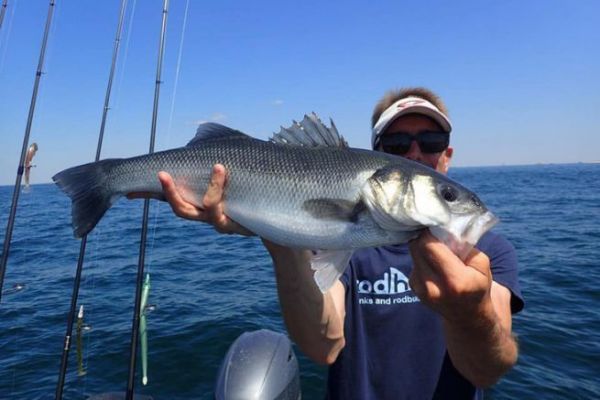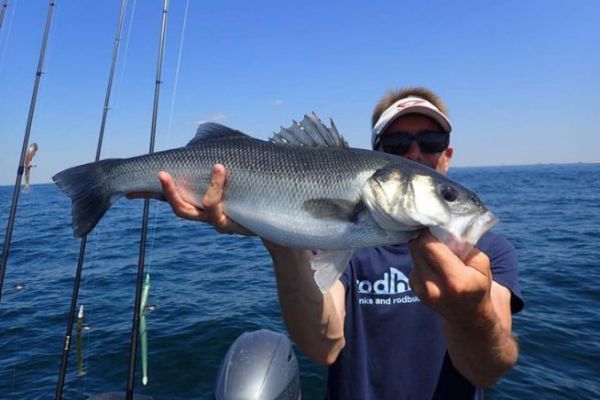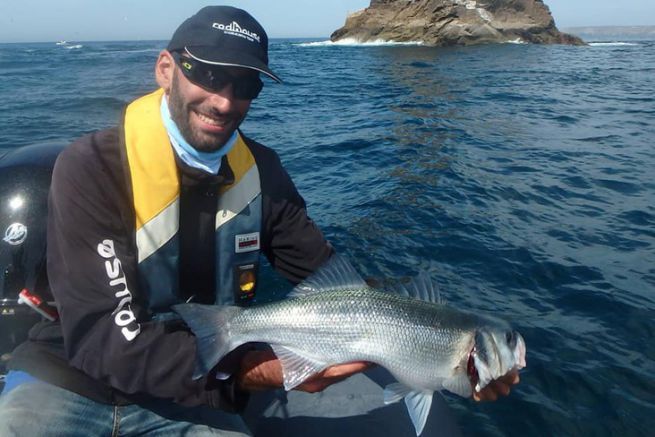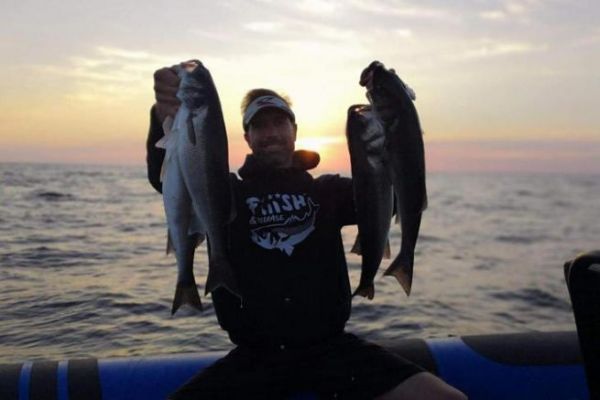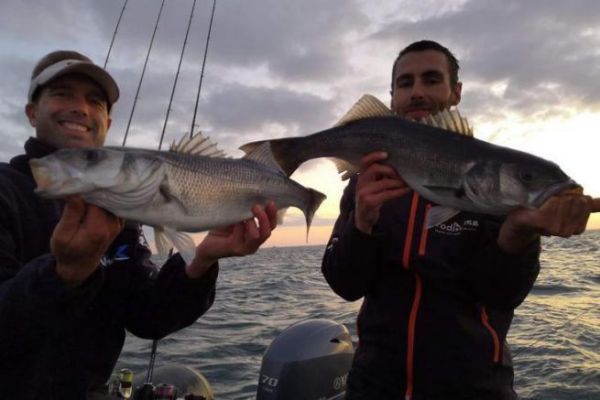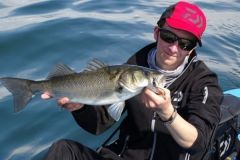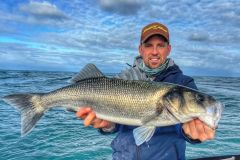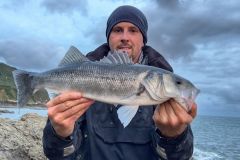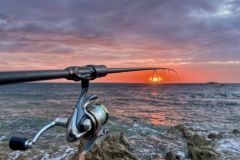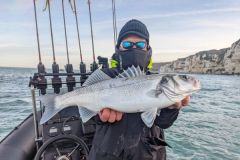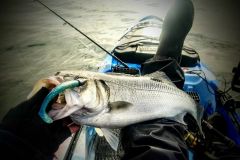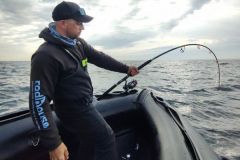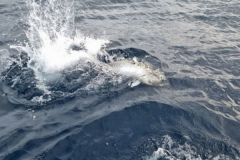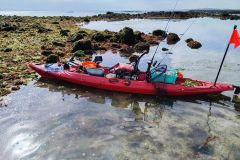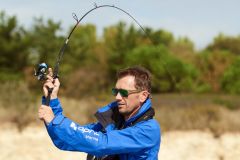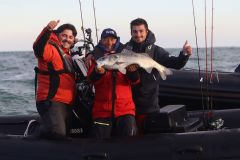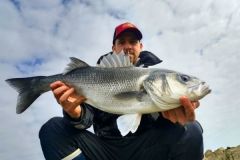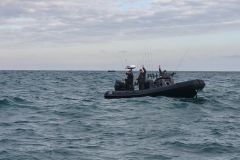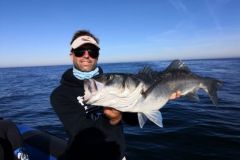Under what conditions?
Fishing on the fly is a technique that allows you to catch a large number of fish, even one after the other, when they are hunting in matte (or not) between two waters. It's a fast, active fishing technique designed to attract fish in full activity... You'll need to imitate a fast-moving, stressed prey that's trying to escape, which is why you'll need to use a very specific animation and presentation technique for your soft lure.
So when fish don't break through the surface to grab your stickbait, or when attacks are more like refusals and slower, closer-to-the-bottom fishing (pulling and scratching) doesn't get the bass to react, exciting them between two waters with a small, very fast lure is an excellent option to keep in mind.
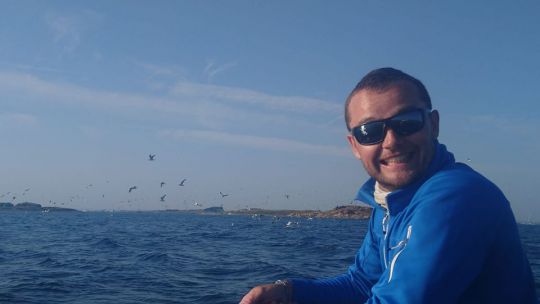
What type of spotlights?
As a general rule, this technique is used in shallow areas, i.e. 2 to 10 m deep. These can be rocky plateaus exposed to the current, emerged rock heads battered by the swell, sandy areas dotted with sand spots or boulders, or shellfish or oyster beds (at high tide, of course...). And, quite simply, in any area where a shoal of forage fish is present, or where there's an obvious hunt!
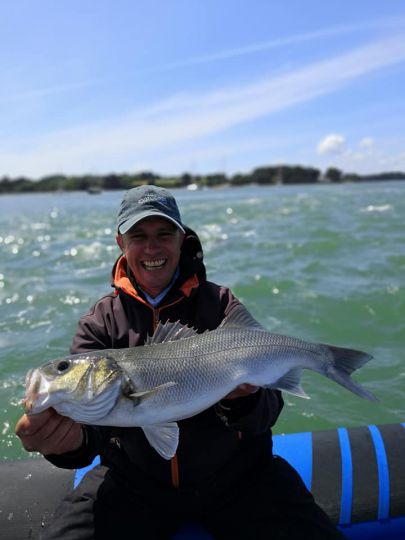
Fishing fast... Objective powerfishing
Fly fishing is the preferred method of fishing for active fish, but also the best way to find them... In fact, by using this technique, you can prospect a large number of spots in a row until you find an area holding bass, and active bass at that! These fast, provocative animations allow you to make numerous casts in a matter of minutes, so you can quickly learn about the presence and activity of predators. On large rocky plateaus with a strong current, you'll be able to make one drift after another until you find the precise area where the bass are holding!
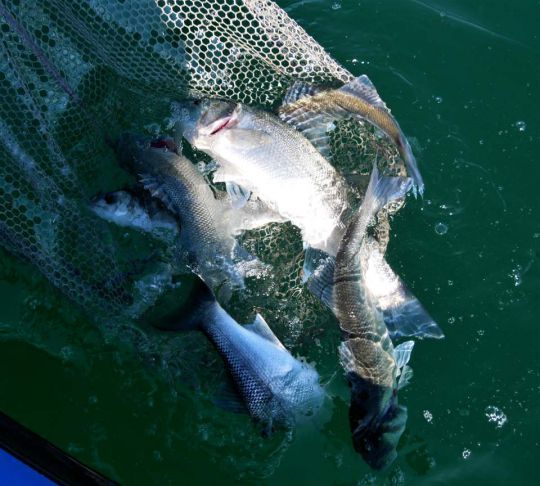
Ideal for beginners
Although it's quite possible to catch some very nice fish on the fly, the majority of your catches will be medium-sized (less than 2 kg). Indeed, since the aim is to find mattes of sea bass or hunting fish, in these conditions the big ones often stay on the sidelines waiting for dying prey. Smaller, less wary and livelier fish will attack your lure more quickly.
However, once you've found the right area, this type of fishing will enable you to make a series of bites and catches, which is very important when you're just starting out in lure fishing.
What's more, since fly-fishing is done in the water column, there's little or no risk of snagging and losing tackle. So beginners can fish actively, without fear, and catch their first bass.
Finally, fly fishing, which requires coordination and control of the banner during animations, is an excellent school for lure fishing.
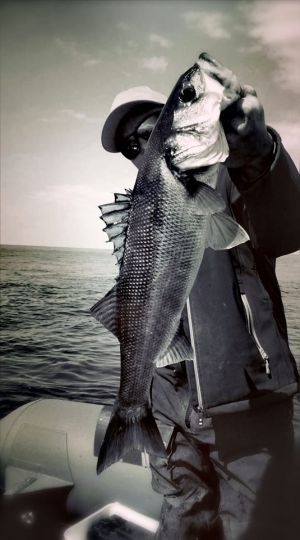
You now know when and where to use this technique, so in the next section we'll look at the right lures and, above all, the animations to master.

 /
/ 